Researchers from McGill University, TRIUMF, the University of Alberta, the University of British Columbia, and the Paul Scherrer Institute (Switzerland) recently began running experiment S1155: Ground State Moments of Lithium-11 at TRIUMF's ISAC facility. The research team, led by TRIUMF Research Scientist Matthew Pearson, focused on pinning down the ratio of quadrupole moments between lithium-9 and lithium-8, and in the near future aim to measure the quadrupole moment for lithium-11. This measurement will provide significant new information on the structure of this halo nucleus, particularly how the extra neutrons in lithium-11 change the shape of the core.
Over 20 years ago, scientists discovered that the radius of isotope lithium-11 was much larger than expected, with two neutrons orbiting around a lithium-9 core at unusually great distances - like a halo - which defied the classical orbital models. The radius of lithium-11 is much closer to that of lead-208 than to the other lithium isotopes (see Figure 1). This hinted that there was very low binding between the two orbiting neutrons and the core, making halo nuclei of great interest to theorists and experimenters alike wishing to explore the structure of this nuclear phenomenon. Despite this interest, lithium-11 and other halo nuclei are still not fully understood.
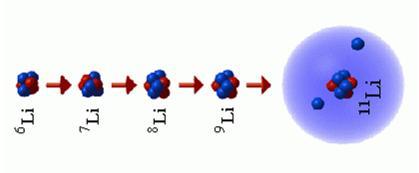 | 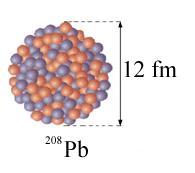 | |
| Figure 1: a comparison of the radius of lithium-11 to its neighbouring lithium isotopes and to lead-208. | ||
Various challenges have arisen at both ends of the spectrum. On the one hand, the various theoretical models which predict the ground state properties of lithium isotopes, present inconsistent values. On the other hand, halo nuclei are short-lived (lithium-11 has a half-life of 8.6 milliseconds) which makes them hard to produce and experiments with them extremely challenging.
Scientists at TRIUMF's ISAC facility have sought to address these challenges with a series of new experimental approaches and systems over the past few years. These and many other experiments have been made possible by having access to the most intense, low-energy lithium-11 beam available.
Since the predicted value of the ratio of quadrupole moments between lithium-9 and lithium-8 are inconsistent in the literature, Pearson and his team set out in the initial stages to look for a precise measurement of this. The team is mainly interested in the ratio of the lithium-11 moment and the lithium-9 moment as it reveals how the extra neutrons in lithium-11 change the shape of the core. This ratio can be obtained by measuring these two isotopes only. However, as the method used only reveals relative values of the moments, a reference to an isotope with a well known absolute value of its moment is required in order to compare with nuclear models. In this case, the reference isotope was lithium-8 as it has a well-known moment and is readily available at ISAC.
The experimental setup is quite innovative: traditionally, lithium-8 with a well-known moment is used to probe the unknown magnetic properties of a material. This experiment inverts that relationship and aims to use the well-known magnetic properties of a material to probe the moment of an incident isotope (lithium-9 and later, lithium-11). For this initial stage of the experiment, low-energy ion beams from ISAC of lithium-8 and lithium-9 were delivered along the polariser beam line where the ions were spin polarised via induced laser induced optical pumping technique. The polarised ions were implanted into a crystal in the β-NQR spectrometer located in the low-field region of the experimental hall (see Figure 2) where the magnetic field had been zeroed to around 10mG (comparatively, Earth's magnetic field is around 500mG). The crystal of choice was strontium titanate (SrTiO3) which is a well studied insulator crystal with cubic structure.
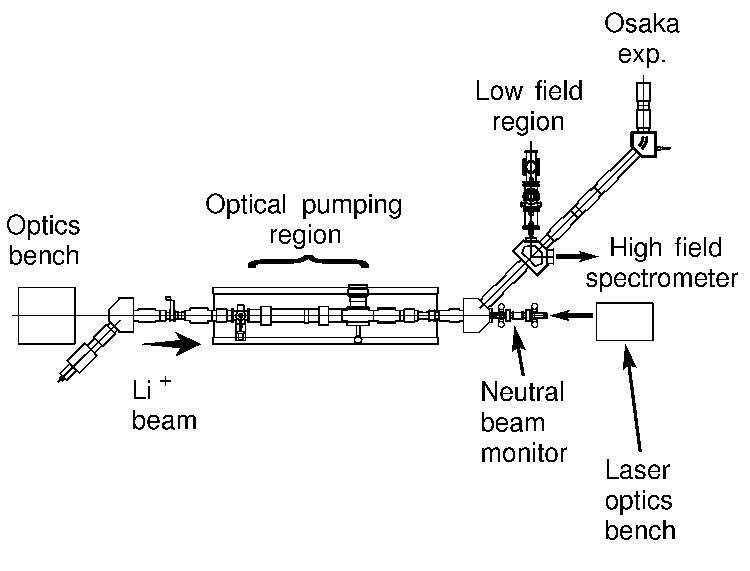 | 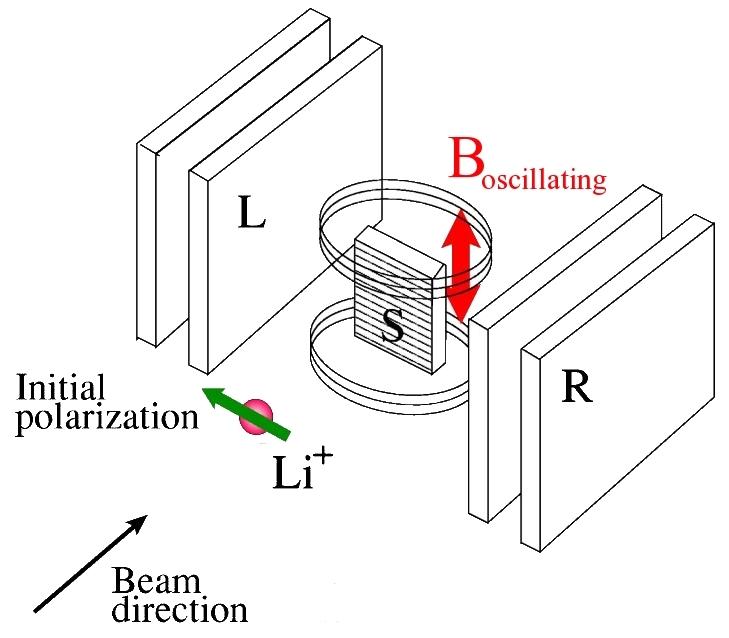 | |
| Figure 2: schematic picture of the polariser beam line. | Figure 3: inside view of the B-NQR spectrometer. |
When an unstable nucleus β-decays, the direction of the emitted particle is given by the initial nuclear polarisation. Therefore, by placing detectors where maximum and minimum count rates are expected (left and right to the beam direction, see Figure 3), the β-decay asymmetry can be measured. Using this technique, quadrupole moments are measured by destroying the polarisation of the implanted beam. This is done by applying an oscillating magnetic field, the frequency of which is characteristic of the nuclei of interest. This is seen as a change in the asymmetry in the left and right detectors.
After measuring the resonance frequency for both lithium-8 and lithium-9, they were able to look for the difference between the two and more accurately measure the ratio of quadrupole moments between lithium-9 and lithium-8 (Q9/Q8 ≈ 0.97) in a zero magnetic field.
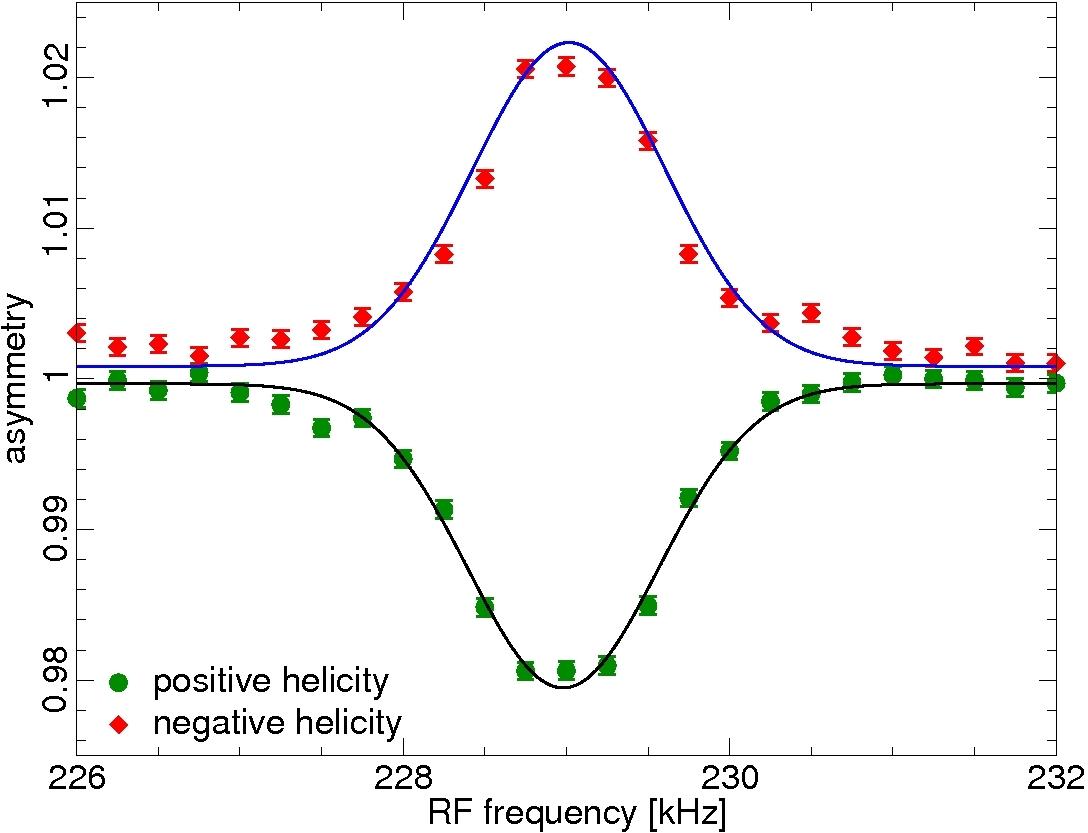 | 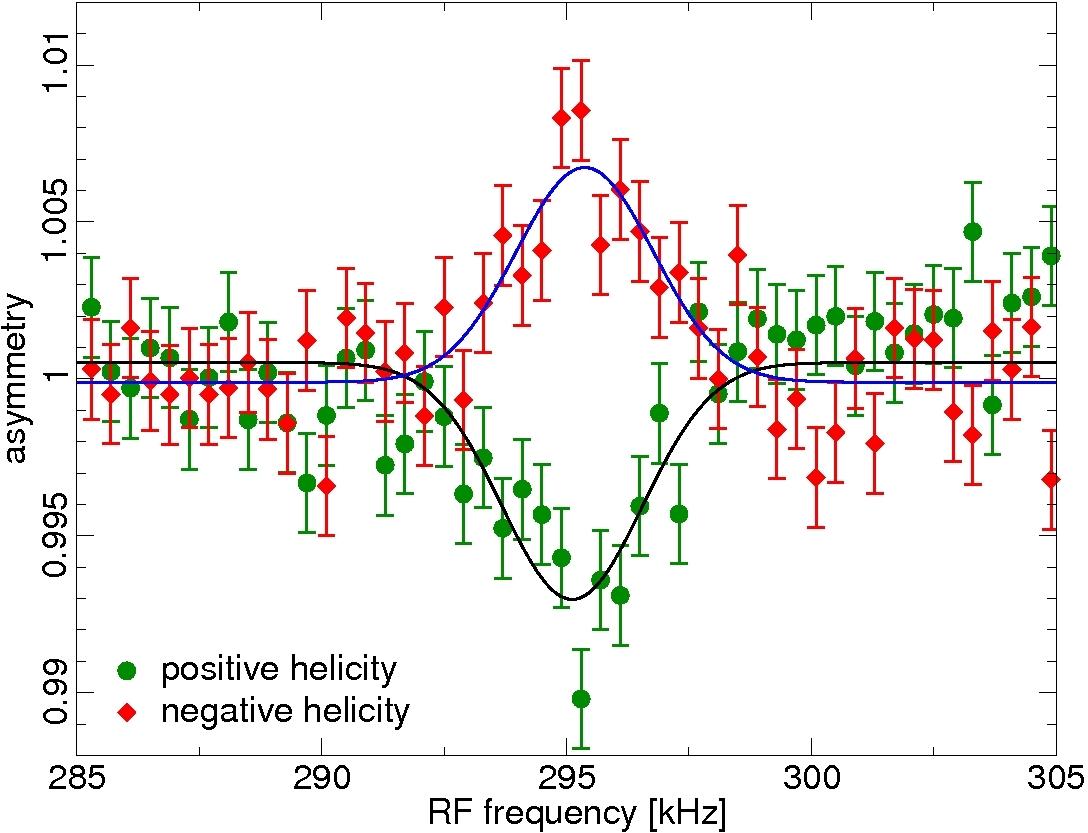 | |
| Above: obtained spectrums for lithium-8 (left) and lithium-9 (right) | ||
The initial experiment has improved the precision of the measurement of the ratio of quadrupole moments of lithium-9 and lithium-8. It has also proven that the measurement of an electric quadrupole moment in a zero magnetic field is a suitable and viable method, as this was the first time this procedure was performed in this manner. In the near future, studies of systematic uncertainties will be undertaken before completing the project with a measurement of lithium-11.
-- Meghan Magee, Communications Assistant with assistance from Annika Voss and Matthew Pearson.
